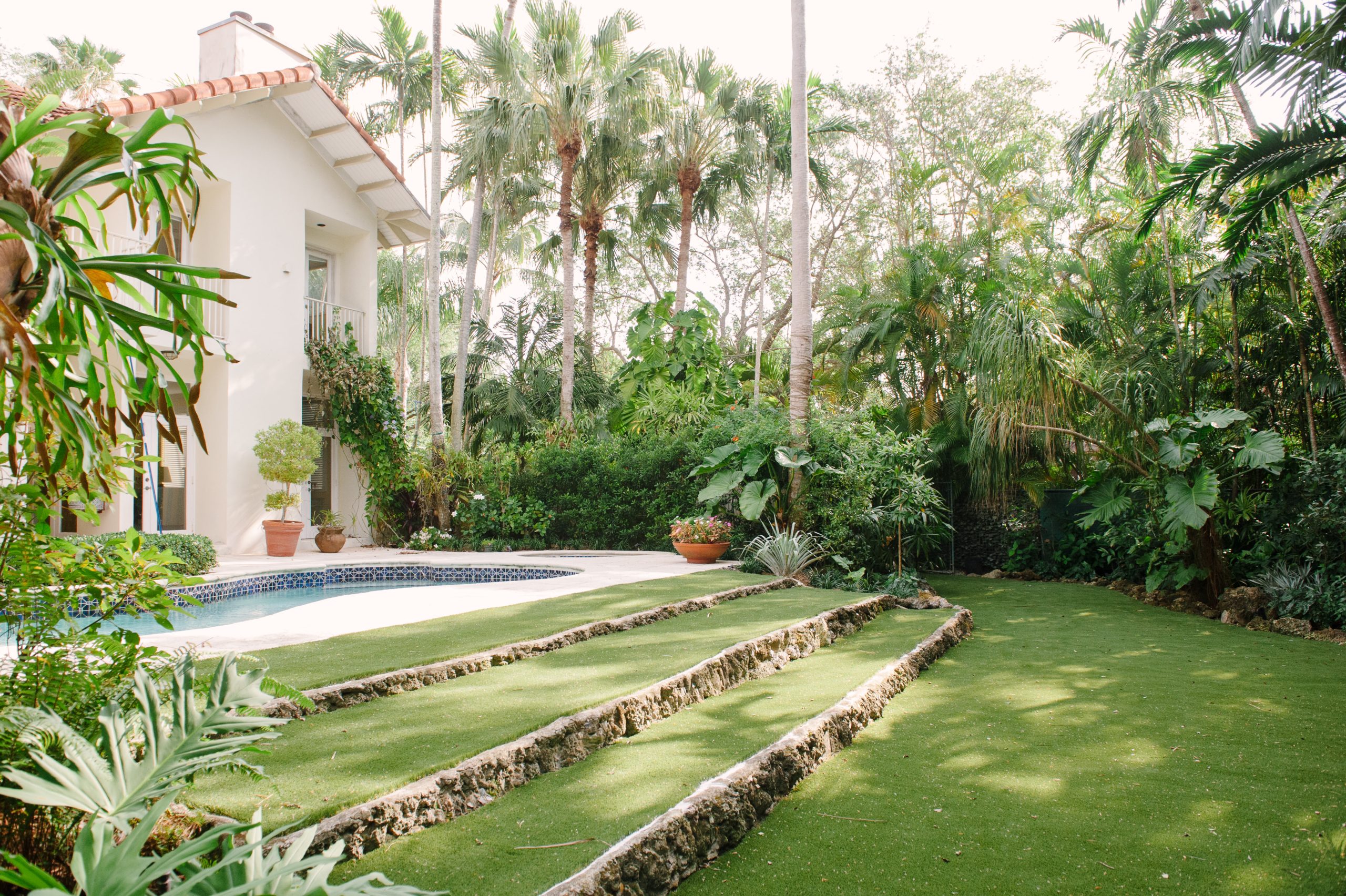Contemporary Landscape Design: Is Artificial Turf Better than Grass?
The grass sure always seems greener on the other side, doesn’t it? Perhaps the grass looks greener because it is artificial turf, one of the hottest trends in contemporary landscape here in South Florida.
Residential and commercial landscaper designers create unique, relatively low maintenance plans using artificial turf.
Our team from Landscaping by Steve Blaum wants to share some information on the pros and cons of artificial turf, as well as some ways it can benefit homeowners, buyers, and landscapers. Read on to learn more from our team.
What is Artificial Turf?
Artificial turf is a form of synthetic grass combined with an “in-fill” base composed of recycled materials. When deciding on what type of lawn to lay down in a contemporary landscape, designers need to ask a few questions before choosing. Some of the pros and cons of this type of turf include:
Decreased Maintenance
Depending on the size of a landscape, installing turf can be expensive. However, these costs significantly decrease as artificial turf alleviates much of the need for maintenance, watering, etc.
Increased Usability
Turf fields add durability compared to traditional grass. This additional usability enabled broader access to a landscape means friends and family can use open outdoor spaces virtually all the time, providing practice and recreational areas a home or business owner might now otherwise have.
Furthermore, problems of spring and fall rains (and seemingly year-long rainstorms in South Florida) resulting in reschedules and cancellations no longer post an issue.
Potential Heat Hazard
Artificial landscapes, unfortunately, absorb heat, providing a potentially serious problem with the summer heat in South Florida. On a hot, 90 degrees weather day in Florida, artificial turn can rise to a heat index of over 120 degrees.
Nevertheless, proprietors can manage landscape use to avoid the hottest times of the day. High temperatures often better reflect a comfort issue instead of a safety issue.
Could Invite Bacteria
Artificial turf can invite staphylococci and other bacteria. These invaders can ably survive on polyethylene plastic, which comprises synthetic turf blades.
While bacteria may live on the surface for over 90 days, it is easily handled with washing, cleaning, and proper maintenance.
Once Artificial, Always Artificial
When a home or business switches their landscape to artificial turf, they often have no choice but to continue utilizing artificial turf material for the foreseeable future.
Once plastic replaces natural grass, it will likely stifle any living organisms within the subsoil.
Unfortunately, this makes growing grass seemingly impossible without several years of soil remediation to grow anything on the surface.
Artificial Turf in Contemporary Landscaping | Landscaping by Steve Blaum
Choosing artificial turf or natural grass will largely depend on a proprietor’s expectations and vision for their landscape before and after they lay turf on a property.
Nevertheless, they must consider the pros and cons of both materials, deciding on the best possible option for the property.
Landscaping by Steve Blaum works hard as a trusted resource in the South Florida community to provide experts on the modern landscaping and hardscapes industry to guide home and business owners to the best possible choices for their properties.
Artificial grass provides a low-maintenance, water-efficient surface for properties. However, this doesn’t mean the material is without its negatives as well.
To learn more about how artificial turf could benefit your home or business, reach out to our team from Landscaping by Steve Blaum today for more information!

